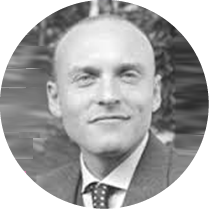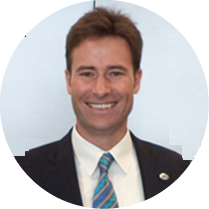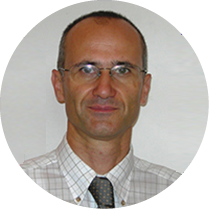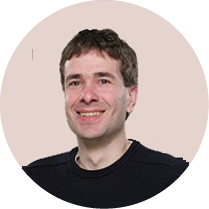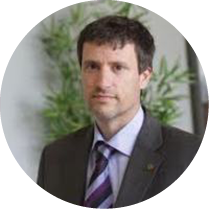
6th International Electronic Conference on Sensors and Applications
Part of the International Electronic Conference on Sensors and Applications series
15–30 November 2019
Biosensors, chemical sensors, Physical Sensors, sensor networks, Structural health monitoring technologies and sensor networks, wearable sensors
- Go to the Sessions
- Event Details
Welcome from the Chairs
All participants of ECSA-6 are welcome to submit the extended work to the Sensors Special Issue "Selected Papers from the 6th International Electronic Conference on Sensors and Applications".
We gladly announce that Dr. Sandra Sendra (University of Granada, Spain) and Priv.-Doz. Dr. Marco Deluca (Montanuniversität Leoben, Austria) as our keynote speakers.
We are pleased to announce Dr. Yves Olsommer, Dr. Jiayue Shen and Dr. Sabina Merlo's papers were awarded the ECSA-6 Best Contribution Award in 2019.
Welcome from the Conference Chairs of the 6th International Electronic Conference on Sensors and Applications
We are pleased to announce the 6th International Electronic Conference on Sensors and Applications. After the success of the five editions from 2014 to 2018, this year edition will focus on four thematic areas where sensors are changing science:
- Chemo- and Biosensors (Session A)
- Physical Sensors (Session B)
- Sensor Networks (Session C)
- Applications (Session D)
There will be three specific sessions:
- Structural Health Monitoring Technologies and Sensor Networks (Specific Session S1)
- Wearable sensors (Specific Session S2)
- Smart Cities (Specific Session S3)
and also a Poster session. Posters can be presented without an accompanying proceedings paper and will be available online on this website during and after the e-conference. However, they will not be added to the proceedings of the conference.
Participants will have the opportunity to examine, explore and critically engage with issues and advances in these areas. We hope to facilitate discussions and exchange within the community.
This event will solely be an online proceeding which allows the participation from all over the world with no concerns of travel and related expenditures. This type of conference is particularly appropriate and useful because research concerned with sensors is progressing rapidly. An electronic conference provides a platform for rapid and direct exchanges about the latest research findings and novel ideas. The participation as well as the "attendance" of this online conference is free of charge.
The 6th International Electronic Conference on Sensors and Applications is sponsored by MDPI and the scientific journal Sensors (ISSN 1424-8220, IF 3.031). The conference proceedings papers and presentations will be available on https://ecsa-6.sciforum.net/ for discussion during 15-30 November 2019 and will be published in journal Proceedings.
Extended and expanded versions of conference proceedings papers can be submitted to Special Issue "Selected Papers from the 6th International Electronic Conference on Sensors and Applications" in journal Sensors, with a 20% discount on the Article Processing Charges.
Sensors is an Open Access publication journal of MDPI in the field of the science and technology of sensors and biosensors.
We hope the community will share this enthusiasm and help making this 6th edition a success—for many to come in the future.
The Chairs of the 6th International Electronic Conference on Sensors and Applications.
|
Dr. Stefano Mariani |
Dr. Stefano Mariani received an M.S. degree (cum laude) in civil engineering in 1995, and a Ph.D. degree in structural engineering in 1999; both degrees are from the Polytechnic University of Milan. He is currently an associate professor at the Department of Civil and Environmental Engineering of the Polytechnic University of Milan. He was a research scholar at the Danish Technical University in 1997, an adjunct professor at Penn State University in 2007, and a visiting professor at the Polytechnic Institute of New York University in 2009. He is a member of the Editorial Boards of Algorithms, International Journal on Advances in Systems and Measurements, Inventions, Machines, Micro and Nanosystems, Micromachines, and Sensors. He has been a recipient of the Associazione Carlo Maddalena Prize for graduate students (1996), and of the Fondazione Confalonieri Prize for PhD students (2000). His main research interests are: the reliability of MEMS that are subject to shocks and drops; the structural health monitoring of composite structures through MEMS sensors; numerical simulations of ductile fracture in metals and of quasi-brittle fracture in heterogeneous and functionally graded materials; extended finite element methods; the calibration of constitutive models via extended and sigma-point Kalman filters; and multi-scale solution methods for dynamic delamination in layered composites. |
|
Dr. Tom A. Messervey |
Dr. Tom A. Messervey has over 20 years of engineering experience, which includes military service in the US Army Corps of Engineers, industrial experience with the Italian Engineering Company, D’Appolonia, teaching excellence at the United States Military Academy at West Point, and coaching services as the EU Facilitator for the Intelligent Manufacturing Systems program (www.ims.org). He serves as an expert for the European Commission in textiles, manufacturing, and energy efficiency. His research interests focus on using sensor data to make better engineering decisions across design, assessment, maintenance, inspections, and energy management to include machine learning. He is a member of the International Association of Bridge Maintenance and Safety (IABMAS), the International Association of Life Cycle Civil Engineering (IALCCE), and a technical reviewer for the International Journal of Safety and Security Engineering and the Journal of Structure and Infrastructure Engineering. |
|
Dr. Alberto Vallan |
Dr. Alberto Vallan received the M.S. degree in Electronic Engineering from the Politecnico di Torino, Italy, in 1996 and the Ph.D. degree in Electronic Instrumentation from the University of Brescia, Italy, in 2000. He is currently an Associate Professor in Electrical and Electronic Measurements with the Department of Electronics and Telecommunications of the Politecnico di Torino. From 2000 to present, he has been a lecturer in courses concerning Electronic Measurements and Sensors. His research interests are focused on the development and characterization of fiber sensors and measuring instruments for biomedical and industrial applications. He is a Senior Member of the IEEE/Instrumentation&Measurement Society. |
|
Dr. Stefan Bosse |
PD Dr. Stefan Bosse studied physics at the University of Bremen. He received a PhD/doctoral degree (Dr. rer. nat.) in physics in the year 2002 at the University of Bremen, and the post-doctoral degree (Habilitation) and the Venia Legendi in Computer Science in the year 2016 at the University of Bremen with his habilitation (postdoctoral degree) "Unified Distributed Sensor and Environmental Information Processing with Multi-Agent Systems". Since 2017 he is teaching and researching as a Privatdozent at the University of Bremen, Department of Computer Science, and since 2018 he is an interim professor at the University of Koblenz-Landau, Faculty Computer Science, Institute of Software Technologies. At the University of Bremen and University Koblenz-Landau he teaches several courses in fundamental computer science, functional programming, and in selected advanced topics covering the design and programming of massive parallel and distributed systems, multi-agents systems and agent-based simulation, high-level synthesis of complex digital logic data processing systems, and material-integrated sensing systems with a high interdisciplinary background. His main research area is distributed artificial intelligence in general, and in particular information processing in massive parallel and distributed systems using agent-based approaches combined with machine learning, and agent-based simulation. A broad range of fields of application and domains are addressed: Material Science, Materials Informatics, Smart Materials, IoT, Production Engineering, Social Science, Crowd Sensing, Geo Science. He conducted projects in the internationally recognized ISIS Scientific Centre for Intelligent Sensorial Materials pushing interdisciplinary research closing the gap between technology and computer science, finally joining the ISIS council and publishing an internationally well regarded handbook on this topic. He published about 100 journal and conference papers and acts as a reviewer and a guest editor for several international journals and is a member of a broad range of international conference programme and organizing committees. |
|
Dr. Francisco Falcone |
Dr. Francisco Falcone received his Telecommunication Engineering Degree (1999) and PhD in Communication Engineering (2005), both at the Public University of Navarre in Spain. From 1999 to 2000 he worked as Microwave Commissioning Engineer, Siemens-Italtel. From 2000 to 2008 he worked as Radio Network Engineer, Telefónica Móviles. In 2009 he co-founded Tafco Metawireless. From 2003 to 2009 he was also Assistant Lecturer at UPNA, becoming Associate Professor in 2009. His research area is artificial electromagnetic media, complex electromagnetic scenarios and wireless system analysis, with applications to context aware environments, Smart Cities and Smart Regions. He has over 500 contributions in journal and conference publications. He has been recipient of the CST Best Paper Award in 2003 and 2005, Best PhD in 2006 awarded by the Colegio Oficial de Ingenieros de Telecomunicación, Doctorate award 2004-2006 awarded by UPNA, Juan Lopez de Peñalver Young Researcher Award 2010 awarded by the Royal Academy of Engineering of Spain and Premio Talgo 2012 for Technological Innovation. |
Call for papers
6th International Electronic Conference on Sensors and Applications
The 6th International Electronic Conference on Sensors and Applications will be held from 15 to 30 November 2019 in the internet environment. This event will solely be an online proceeding which allows the participation from all over the world with no concerns of travel and related expenditures, while at the same time making rapid and direct exchanges about the latest research findings and novel ideas in sensors. All proceedings will be held online at https://ecsa-6.sciforum.net/ and in Journal Proceedings.
The conference aims to bring the scientists working in the field onto a common platform and promote and advance the exciting and rapidly changing field of sensing technologies and applications along the following four main themes:
- Chemo and Biosensors (Session A)
- Physical Sensors (Session B)
- Sensor Networks (Session C)
- Applications (Session D)
and three specific sessions:
- Structural Health Monitoring Technologies and Sensor Networks (Specific Session S1)
- Wearable sensors (Specific Session S2)
- Smart Cities (Specific Session S3)
and also a Poster session.Posters can be presented without an accompanying proceedings paper and will be available online on this website during and after the e-conference. However, they will not be added to the proceedings of the conference.
Paper Submission Guidelines
For information about the procedure for submission, peer-review, revision and acceptance of conference proceedings papers, please refer to the section "Instructions for Authors": https://ecsa-6.sciforum.net/#instructions.
Time Schedule
- Abstract Submission: 1 October 2019
- Notification of Acceptance: 5 October 2019
- Proceedings Paper Submission Deadline: 22 October 2019
- Conference Open: 15-30 November 2019
Conference Chairs

Department of Civil and Environmental Engineering, Politecnico di Milano, Italy
stefano.mariani@polimi.it

thomas.messervey@r2msolution.com

Department of Electronics and Telecommunications Politecnico di Torino, Turin, Italy
alberto.vallan@polito.it

Department of Mathematics and Computer Science, University of Bremen, Bremen, Germany
sbosse@uni-bremen.de

Department of Electrical and Electronic Engineering, Public University of Navarre, Spain
francisco.falcone@unavarra.es
Conference Committee

Distinguished University Professor,
Senior Canada Research Chair in Information Technology,
Canada
Distinguished University Professor Senior Canada Research Chair in Information Technology Director, Micro- and Nano-Systems Laboratory President - Academy of Science, Royal Society of Canada (2015-17) Electrical and Computer Engineering Department, ITB 104 McMaster University, 1280 Main Street West Hamilton, ON L8S 4K1, CANADA URL: www.ece.mcmaster.ca/~jamal
Microelectronics, Nanoelectronics and Opto-electronics
jamal@mcmaster.ca

Department of Electrical, Electronic and Telecommunication Engineering and Naval Architecture, University of Genova, Italy
Embedded Integrated Circuits for Telecommunications; Electronic/artificial sensitive skin; Embedded electronic systems for tactile sensors; Tactile sensing systems for prosthetics and robotics; Neuromorphic touch sensors
maurizio.valle@unige.it

Institute of Crystallography,
CNR - Via Salaria km 29,3 - Monterotondo,
Rome, Italy
Roberto Pilloton (CNR-IC) is the Editor in Chief of IJEAC - International Journal of Environmental Analytical Chemistry (Taylor and Francis, London). He is in the Editorial Board of Biosensors (ISSN 2079-6374), and Sensors (ISSN 1424-8220;), two open access journals, providing an advanced forum for studies related to the science and technology of sensors, biosensors and biosensing, published by MDPI, Basel, Switzerland,
Electrochemistry, environmental analytical chemistry; biosensors; sensors and sensing; continuous flow monitoring; immobilization techniques; enzyme inhibitors; lab on a chip; nanostructured electrodes; screen printed electrodes; herbicides; pe
Roberto.Pilloton@CNR.it

Department of Communications, Polytechnic University of Valencia, Camino de Vera 46022, Valencia, Spain,
Chair of the Integrated Management Coastal Research Institute (IGIC)
Prof. Jaime Lloret (jlloret@dcom.upv.es) received his B.Sc.+M.Sc. in Physics in 1997, his B.Sc.+M.Sc. in electronic Engineering in 2003 and his Ph.D. in telecommunication engineering (Dr. Ing.) in 2006. He is a Cisco Certified Network Professional Instructor. He worked as a network designer and administrator in several enterprises. He is currently Associate Professor in the Polytechnic University of Valencia. He is the Chair of the Integrated Management Coastal Research Institute (IGIC) and he i
jlloret@dcom.upv.es

Department of Mathematics, CoDAlab,
Barcelona East School of Engineering (EEBE), Universitat Politècnica de Catalunya, Barcelona, Spain
Francesc Pozo received the degree in mathematics from the University of Barcelona, Barcelona, Spain, in 2000, and the Ph.D. degree in applied mathematics from the Universitat Politècnica de Catalunya, Barcelona, in 2005. Since 2000, he has been with the Department of Mathematics and the Barcelona East School of Engineering (EEBE), Universitat Politècnica de Catalunya, where he is currently an Associate Professor with the Control, Modeling, Identification and Applications Research Group (CoDAlab). He is also a Teaching Collaborator at the Open University of Catalonia, Barcelona. His research interests include wind turbine control, semiactive vibration mitigation in civil engineering structures (buildings and bridges), automotive and aeronautic systems, and offshore support structures, structural health monitoring (SHM) and condition monitoring (CM) for wind turbines and, in general, the application of applied mathematics in engineering problems. Dr. Pozo serves as a Secretary of the Spanish Joint Chapter of the IEEE Control Systems S
His research interests include wind turbine control, semiactive vibration mitigation in civil engineering structures (buildings and bridges), automotive and aeronautic systems, and offshore support structures, structural health monitoring (SHM) and condit
francesc.pozo@upc.edu
Keynote Speakers
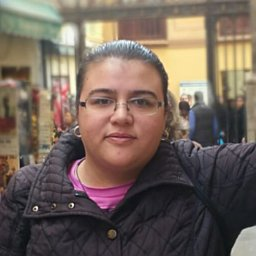
Dr. Sandra Sendra (ssendra@ugr.es) was born in Gandia, Valencia (Spain) on February 27, 1985. She received her degree of Technical Engineering in Telecommunications in 2007. She received her M.Sc. of Electronic Systems Engineering in 2009 and her Ph.D. in electronic engineering (Dr. Ing.) in 2013. Currently, she is assistant professor at the University of Granada (Spain). She is Cisco Certified Network Associate Instructor since 2009 and HP-ATA instructor since 2015. She is author or co-author of more than 120 papers in SCI journals, peer-reviewed conferences proceedings, books and international book chapters. She is editor-in-chief of the international journal "WSEAS Transaction on Communications" since 2012, guest editor several SI in International Journals related to underwater communications, sensors and actuator networks. She has been the co-editor of 5 conference proceedings and associate editor in 4 international journals. She has been involved in more than 140 Program and organization committees of international conferences until 2019. She has been the general chair (or co-chair) of 3 International conferences. She has been session chair in 12 international conferences. She has participated in 16 research projects. She is IEEE Member. Her research interests, but no limited, include saving energy techniques in electronic circuits, sensor deployment, WSN, UWSN and the application of these technologies for environmental monitoring.
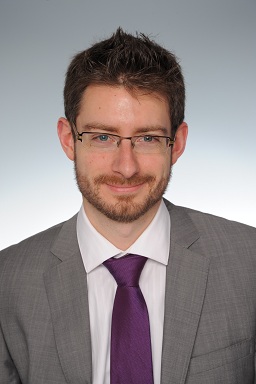
Photo: ©MCL/Foto Freisinger
Priv.-Doz. Dr. Marco Deluca received a Master in Chemical Engineering from the University of Trieste (Italy) and a Ph. D. in Materials Science from Kyoto Institute of Technology (Japan). He obtained in 2016 the Habilitation (venia docendi) in Materials Science from the Montanuniversität Leoben (Leoben, Austria). The main theme of his scientific career is the study of structure-property relationships in functional oxide materials, in particular ceramics for energy harvesting, energy storage and gas sensing applications. He is a member of the IEEE Ferroelectrics Standing Committee and of the Board of Directors of the Austrian Ceramic Society. He authored/co-authored more than 70 refereed publications in journals and conferences and two book chapters, and gave more than 20 invited presentations to international conferences and workshops. His h-index is 20. Marco Deluca is also Lecturer in the Materials Science Department of the Montanuniversität Leoben (Leoben, Austria).
List of Keynotes & Videos
Keynotes
Lora-Based System for Tracking Runners in Cross Country Races
Relate Paper:
Lora-Based System for Tracking Runners in Cross Country Races
Instructions for Authors
Submissions should be done by the authors online by registering with https://sciforum.net/, and using the "Start New Submission" function once logged into system.
- Scholars interested in participating with the conference can submit their abstract (about 200-250 words covering the areas of manuscripts for the proceedings issue) online on this website until 10 September 2019 1 October 2019.
- The Conference Committee will pre-evaluate, based on the submitted abstract, whether a contribution from the authors of the abstract will be welcome for the 6th International Electronic Conference on Sensors and Applications. All authors will be notified by 15 September 2019 5 October 2019 about the acceptance of their abstract.
- If the abstract is accepted for this conference, the author is asked to submit the manuscript, optionally along with a PowerPoint and/or video presentation of his/her paper (only PDF), until the submission deadline of 15 October 2019 22 October 2019.
- The conference proceedings papers and presentations will be available on https://ecsa-6.sciforum.net/ for discussion during the time of the conference 15–30 November 2019 and will be published in Journal Proceedings.
- The Open Access Journal Sensors will publish Special Issue of the conference and accepted papers will be published in the proceedings of the conference itself. After the conference, the Conference Committee will select manuscripts that may be included for publication in the Special Issue of the journal Sensors (the submission to the journal is independent from the conference proceedings and will follow the usual process of the journal, including peer-review, APC, etc.).
Manuscripts for the proceedings issue must have the following organization:
First page:
- Title
- Full author names
- Affiliations (including full postal address) and authors' e-mail addresses
- Abstract (200-250 words)
- Keywords
- Introduction
- Methods
- Results and Discussion
- Conclusions
- (Acknowledgements)
- References
Manuscripts should be prepared in MS Word or any other word processor and should be converted to the PDF format before submission. The publication format will be PDF. The manuscript should count at least 3 pages (incl. figures, tables and references) and should not exceed 6 pages.
Authors are encouraged to prepare a presentation in PowerPoint or similar software, to be displayed online along with the Manuscript. Slides, if available, will be displayed directly in the website using Sciforum.net's proprietary slides viewer. Slides can be prepared in exactly the same way as for any traditional conference where research results can be presented. Slides should be converted to the PDF format before submission so that our process can easily and automatically convert them for online displaying.
Besides their active participation within the forum, authors are also encouraged to submit video presentations. If you are interested in submitting, please contact the conference organizer – ecsa@mdpi.com to get to know more about the procedure. This is an unique way of presenting your paper and discuss it with peers from all over the world. Make a difference and join us for this project!
Submission: Manuscripts should be submitted online at https://sciforum.net/login by registering and logging in to this website.
Accepted File Formats
- MS Word: Manuscript prepared in MS Word must be converted into a single file before submission. When preparing manuscripts in MS Word, the 6th Electronic Conference on Sensors and Applications Microsoft Word template file (see download below) must be used. Please do not insert any graphics (schemes, figures, etc.) into a movable frame which can superimpose the text and make the layout very difficult.
- LaTeX: Manuscripts prepared in LaTeX must be collated into one ZIP folder (include all source files and images, so that the Conference Secretariat can recompile the submitted PDF). When preparing manuscripts in LaTeX, please use the 6th Electronic Conference on Sensors and Applications LaTeX template files.
- Paper Format: A4 paper format, the printing area is 17.5 cm x 26.2 cm. The margins should be 1.75 cm on each side of the paper (top, bottom, left, and right sides).
- Paper Length: The conference proceedings paper should not be longer than 6 pages. The conference manuscript should be as concise as possible.
- Formatting / Style: The paper style of the Journal Proceedings should be followed. You may download the template file to prepare your paper (see above). The full titles and the cited papers must be given. Reference numbers should be placed in square brackets [ ], and placed before the punctuation; for example [4] or [1-3], and all the references should be listed separately and as the last section at the end of the manuscript.
- Authors List and Affiliation Format: Authors' full first and last names must be given. Abbreviated middle name can be added. For papers written by various contributors a corresponding author must be designated. The PubMed/MEDLINE format is used for affiliations: complete street address information including city, zip code, state/province, country, and email address should be added. All authors who contributed significantly to the manuscript (including writing a section) should be listed on the first page of the manuscript, below the title of the article. Other parties, who provided only minor contributions, should be listed under Acknowledgments only. A minor contribution might be a discussion with the author, reading through the draft of the manuscript, or performing English corrections.
- Figures, Schemes and Tables: Authors are encouraged to prepare figures and schemes in color. Full color graphics will be published free of charge. Figure and schemes must be numbered (Figure 1, Scheme I, Figure 2, Scheme II, etc.) and a explanatory title must be added. Tables should be inserted into the main text, and numbers and titles for all tables supplied. All table columns should have an explanatory heading. Please supply legends for all figures, schemes and tables. The legends should be prepared as a separate paragraph of the main text and placed in the main text before a table, a figure or a scheme.
It is the authors' responsibility to identify and declare any personal circumstances or interests that may be perceived as inappropriately influencing the representation or interpretation of clinical research. If there is no conflict, please state here "The authors declare no conflict of interest." This should be conveyed in a separate "Conflict of Interest" statement preceding the "Acknowledgments" and "References" sections at the end of the manuscript. Financial support for the study must be fully disclosed under "Acknowledgments" section.
MDPI, the publisher of the Sciforum.net platform, is an open access publisher. We believe that authors should retain the copyright to their scholarly works. Hence, by submitting a Communication paper to this conference, you retain the copyright of your paper, but you grant MDPI the non-exclusive right to publish this paper online on the Sciforum.net platform. This means you can easily submit your paper to any scientific journal at a later stage and transfer the copyright to its publisher (if required by that publisher).
List of accepted submissions (85)
| Id | Title | Authors | Presentation Video | Poster PDF | |||||||||||||||||||||||||||||||||||||
|---|---|---|---|---|---|---|---|---|---|---|---|---|---|---|---|---|---|---|---|---|---|---|---|---|---|---|---|---|---|---|---|---|---|---|---|---|---|---|---|---|---|
| sciforum-027057 | Numerical Study of A Multi-Layered Strain Sensor for Structural Health Monitoring of Asphalt Pavement | , , , , , | N/A |

|
Show Abstract |
||||||||||||||||||||||||||||||||||||
|
Crack initiation and propagation affect the mechanical properties of asphalt pavement and significantly limit its design life. To assess the structural health of asphalt, knowledge of the strain condition has proven to be useful and optical fibers, conventional strain gauge, metal-foil-type gauges, can be used for this purpose. The high cost of optical fibers has limited their use in this application and although conventional strain gauges have an excellent capability of assessing even large strains, they are rarely used because asphalt paving has high temperature (up to 150 ℃) and pressure (around 290ksi) during installation. A new multi-layered strain sensor has been proposed to overcome the installation challenges in asphalt pavement and provide a reliable structural health monitoring of capability. In this proof-of-concept study, a finite element model was created to simulate the pavement–sensor interaction for the proposed strain sensor in order to optimize its design and potential. The core of the strain sensor is an H-shaped Araldite GY-6010 epoxy structure with a set of PVDF piezoelectric transducer in its center beam and a polyurethane foam layer at its external surface. An extra thin layer of urethane casting resin is then coated at the external surface of the polyurethane foam to prevent the sensor from being damaged under harsh installation condition. During the life of the pavement, traffic loads deform the embedded sensor. The sensor deflection variations register as voltage amplitude changes by the piezoelectric transducers that are later recorded as strain changes. When a crack initiates and propagates in the pavement, sensor deflection increases dramatically as the pavement fails to maintain its designed tensile and flexural strength. The simulation of the pavement–sensor interaction resulted in a modification of several key elements of the original design. The internal Araldite epoxy structure, and outer foam layer were optimized with thicknesses of 11mm, and 2.5mm, respectively. Two design parameters for the sensor, side wing length/middle beam length ratio, and pavement thickness, were also adjusted for optimal design and location of the sensor. The numerical model was created and the simulation performed using COMSOL. Using a fixed traffic load, and varying the side wing length between 20mm-50mm, and the middle beam length between 80mm-200mm, with the best ratio of side wing to middle beam length of 0.3125 was determined as a result of this study. |
|||||||||||||||||||||||||||||||||||||||||
| sciforum-027330 | Spectro-temporal Analysis of the Ionospheric Sounding of an NVIS HF Sensor | , , | N/A | N/A |
Show Abstract |
||||||||||||||||||||||||||||||||||||
|
In communications, channel models are useful approximations to the performance of a real channel, which most of the times is not available for repeated tests. In this work we present the problem over the real NVIS ionospheric scenario channel sounding, evaluating the channel propagation characteristics in terms of frequency spread and time spread, with the final goal to design a channel model. A NVIS channel model can be obtained from the evaluated channel parameters, but on one hand, there is the problem of missing data due to bad channel performance in some frequencies, and on the other hand, the measured parameters have strong dependencies between them that cannot be evinced directly. In this work, we conduct a first set of analysis to the soundings to determine the dependencies in terms of quality of the channel propagation but referring mainly to the Doppler spread and the time spread in the sensor. This classification approach will allow us to face the second part of the research, with the focus on the design of the channel model for the ionospheric communication of remote sensors. |
|||||||||||||||||||||||||||||||||||||||||
| sciforum-026993 | Monitoring of the Ceramic Kerf During the Laser Cutting Process through Piezoelectric Transducer | , , , , , | N/A | N/A |
Show Abstract |
||||||||||||||||||||||||||||||||||||
|
Advanced ceramics are widely used in industry due to their unique properties. However, the machining of ceramic components by conventional methods is difficult due to their high hardness and brittleness. In this sense, laser beam machining (LBM) is presented as an alternative to conventional methods, enabling the machining of workpieces through more accurate and less invasive techniques. Despite the advantages of laser machining, the process still needs to be studied in detail, as advanced ceramic machining is considered a stochastic process. Thus, real-time monitoring systems are required in order to optimize the ceramic laser machining. Therefore, this paper proposes a novel method for monitoring the cutting kerf in the laser cutting process of ceramic components using low-cost piezoelectric transducer (PZT) and digital signal processing. Tests were performed on the surface of an alumina ceramic workpiece under different machining conditions. The cutting kerf was measured by a digital microscope and the raw signals from the PZT transducer were collected at a sampling rate of 2 MHz. Time domain and frequency domain analyzes were performed in order to find a frequency band that best correlates with the process conditions. Finally, a linear regression was calculated in order to correlate the PZT signal and the measured kerf. The results showed that the piezoelectric transducer was sensitive to the acoustic activity generated during the process, allowing the real-time monitoring of the cutting kerf. Thus, the approach proposed in this paper can be used efficiently in the monitoring of the laser cutting process. |
|||||||||||||||||||||||||||||||||||||||||
| sciforum-026996 | On-line digitalization technologies for monitoring activities in the marine environment. | , , | N/A | N/A |
Show Abstract |
||||||||||||||||||||||||||||||||||||
|
This proceeding shows the results of the investigation of techniques of integration, management and visualization of massive data from the digitalization of environmental and procedural parameters of facilities that operate in the marine environment. The work focuses on three main lines: (1) research on the development of a Cloud-based system for Big Data that allows the hosting of the data generated by the different devices to be monitored (GPS, sounds, vibrations, video, temperature, emissions, consumption, power, etc.). (2) Implement a first layer of analysis and visualization of information. Thus, there is a first intelligent layer that addresses one of the four pillars of Web 4.0: machine-to-machine (M2M) communication. (3) BigData analytics research for post-processing of information. Depending on the context of the data source (marine environment or vessel), different analyzes of the recorded data are performed. With this, progress is made in another of the pillars of Web 4.0: use of context information, since the application is in charge of intelligently processing the data of the different variables together although they are not, in principle, directly related. |
|||||||||||||||||||||||||||||||||||||||||
| sciforum-027316 | A Statistical Method for Area Coverage Estimation and Loss Probability Analysis on Mobile Sensor Networks | , | N/A | N/A |
Show Abstract |
||||||||||||||||||||||||||||||||||||
|
Sensor networks are formed by fixed or mobile sensor nodes and their functions are to capture the events that occur within a certain area and then relay to a central node. Normally sensor nodes are not able to transmit or receive information over long distances due to the need to use less energy and thus extend their useful life. Therefore, the number of sensor nodes in a given area directly influences the coverage of this area and the ability of information to be relayed by several sensors to the central node. If there are many missed messages the application will have its performance compromised. In this paper we used a statistical method-based on Monte Carlo approach to estimate the probability of message loss and area coverage. The position and proper motion of the sensors are randomly chosen and from that we estimate how many nodes can communicate with the central node directly or through another sensor working as relay. The free variables in our analysis are node density, node displacement velocity and sensor quantity. The results obtained are compared analytically with simple cases in order to validate the results obtained by the simulations performed. |
|||||||||||||||||||||||||||||||||||||||||
List of Authors (274)
Conference Schedule
Abstract Submission: 10 September 2019
Notification of Acceptance: 15 September 2019
Paper Submission Deadline: 15 October 2019
Conference Open: 15-30 November 2019
Conference Secretariat
Ms. Stefanie Tian
MDPI Branch Office, Beijing
E-Mail: ecsa@mdpi.com
Ms. Nora Zhang
MDPI Branch Office, Beijing
E-Mail: ecsa@mdpi.com
Sponsoring Opportunities
For information regarding sponsoring opportunities, please contact the conference secretariat.
A. Chemo- and Biosensors
Session Chair
Dr. Stefano Mariani, Department of Civil and Environmental Engineering, Politecnico di Milano, Italy
Show all published submissions (7) Hide published submissions (7)
Submissions
List of Papers (7) Toggle list
B. Physical Sensors
Session Chair
Dr. Alberto Vallan, Department of Electronics and Telecommunications, Politecnico di Torino, Italy
C. Sensor Networks
Session Chairs
Dr. Francisco Falcone, Department of Electrical and Electronic Engineering, Public University of Navarre, Pamplona, Spain
Dr. Stefan Bosse, Department of Computer Science, University of Bremen, and Faculty Computer Science, University of Koblenz-Landau, Germany
D. Applications
Session Chair
Dr. Thomas B. Messervey, CEO and Co-Founder, Research to Market Solution s.r.l., Italy
S1. Structural Health Monitoring Technologies and Sensor Networks
Structural health monitoring (SHM) of civil structures and infrastructure aims at detecting any potential damage, leading to an irreversible reduction of their stiffness and strength characteristics and, possibly, to catastrophic events. As changes in the mechanical properties cannot be directly sensed, SHM systems perform data analytics on measurements to indirectly identify the damage. SHM can be therefore seen as the analysis of sensor data from operating structural systems to extract information used for decision-making process. The goal of this session is to collect contributions in the disciplines of physical sensors and also computer science and engineering. Experimental and theoretical works are both welcome, with the aim of moving towards the design of robust and resilient smart sensing strategies, and to effectively extract information from raw data acquired by pervasive sensor networks.
Topics include: design and exploitation of wireless sensor networks, multi-functional materials, energy harvesting, MEMS sensors; AI-based data mining, cloud/edge/fog computing for infrastructure maintenance; model-based Big Data analytics methods, such as Kalman and particle filtering for real-time damage detection; computational modelling for infrastructure simulation, optimization and response prediction.
Session Chairs
Dr. Yashar Eftekhar Azam, Department of Civil Engineering, University of Nebraska-Lincoln
Dr. Stefano Mariani, Department of Civil and Environmental Engineering, Politecnico di Milano, Italy
S2. Wearable Sensors
The market and the applications of wearable sensors are rapidly growing thanks to the widespread availability of miniaturized sensors having reduced power consumption and wide interfacing capabilities. Relevant applications of wearable sensors can be found in our everyday life both for scientific and non-scientific purposes, such as the monitoring of physiological parameters for health and for fitness assessment. Session topics include:
- development and advances of sensor technology for wearable systems
- power management and energy harvesting
- flexible sensors and related electronics and circuits
- characterization and calibration of wearable sensors
- textile integration of sensors and electronics
- smart wearable sensors
- wearable sensor for e-health, security , sport and gaming
- activity and fitness trackers
Session Chair
Dr. Alberto Vallan, Department of Electronics and Telecommunications, Politecnico di Torino, Italy
S3. Smart Cities
Sensors, sensor networks and the information they provide are the fundamental building block of smart cities and everything they have to offer toward improving the quality of life. This session encourages researchers worldwide to share their sensors and applications related to smart cities as we build the urban future of tomorrow. Topics are not limited to but could include submissions related to smart buildings, districts and urban spaces, smart grids, environmental monitoring, transportation, infrstructure and mobility, IoT, and sensors and applications that empower citizens and improve qulity of life.
Session Chairs
Dr. Thomas B. Messervey, CEO and Co-Founder, Research to Market Solution s.r.l., Italy
Dr. Stefan Bosse, Department of Computer Science, University of Bremen, and Faculty Computer Science, University of Koblenz-Landau, Germany




